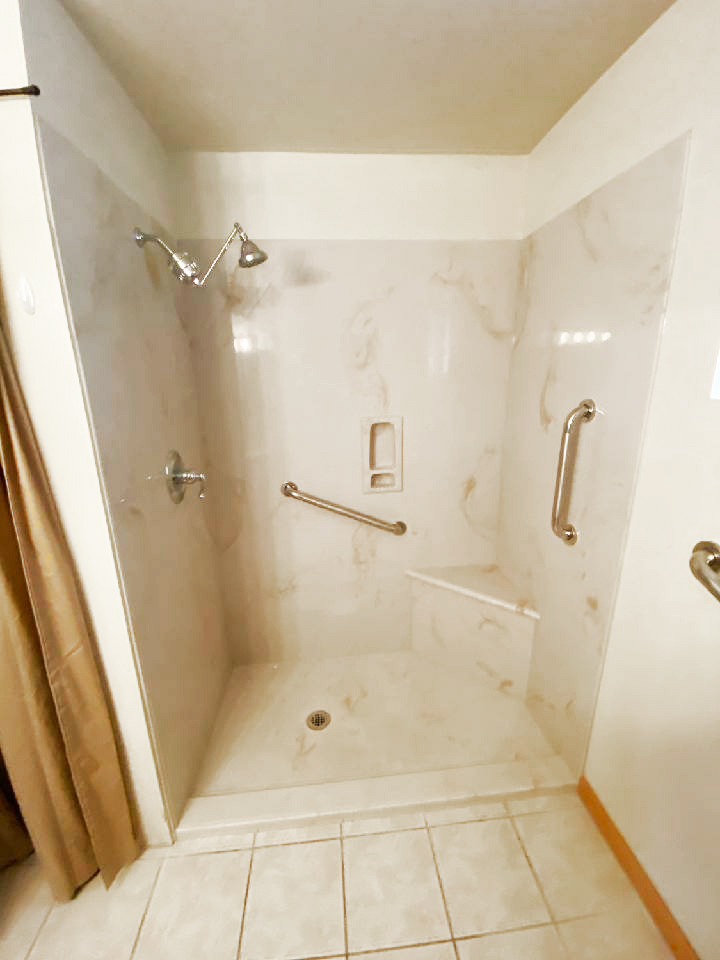Adding a bathroom to your basement is a smart way to improve the usability and value of your house. A basement bathroom can be a useful addition, whether your goal is to create a guest suite, a recreational space, or just more convenience. Nonetheless, this project calls for meticulous planning, knowledge of building codes, and consideration of a number of difficulties particular to below-grade construction.
Advantages of a Bathroom in a Basement
Enhanced Home Value: The market value of your house can be considerably raised by adding a bathroom. A half-bath can add roughly 10% to the value of your house, while a full-bath can add anywhere from 15% to 25%, according to HomeAdvisor.
Enhanced Functionality: If you regularly use the basement as a home office, guest room, or entertainment space, a basement bathroom is a great addition.
Possibility of Extra Living Space: After adding a bathroom, the basement can be made into a separate living space that is perfect for visitors or even rented out to generate extra cash.
Obstacles and Things to Think About
Despite the many benefits, there are certain difficulties in installing a bathroom in a basement:
- Plumbing Issues: Because the basement is situated beneath the main sewer line, plumbing issues may arise. In order to install drainage lines at the proper slope for effective waste removal and to avoid clogs, it is frequently necessary to break through the concrete foundation. To move waste upward to the septic line or main sewer, you might also need to install a sewage ejector pump.
- Moisture and Waterproofing: If moisture problems in basements are not adequately addressed, they may result in mold and mildew. Before construction starts, it’s imperative to make sure that sufficient waterproofing measures are in place.
- Ventilation: In order to avoid humidity buildup, which can harm fixtures and encourage the growth of mold, proper ventilation is crucial. Maintaining air quality frequently requires installing an exhaust fan.
- Building Codes and Permits: It is essential to adhere to local building codes. This entails securing the required permits and making certain that all work complies with code specifications, especially those pertaining to plumbing and electrical systems.
Cost Factors
The size of the bathroom, the type of fixtures used, and the difficulty of the plumbing work all affect how much it costs to install a basement bathroom. Homeowners should budget between $8,000 and $15,000 on this project on average. Costs for labor, supplies, and required permits are included in this estimate.
Overview of the Installation Process
- Even though licensed professionals are best suited to handle many aspects of this project, you can manage it more successfully if you understand the general procedure:
- Planning and Design: Choose fixtures, plan the plumbing and electrical systems, and decide on the bathroom’s layout. To make the most of the available space and guarantee adherence to building codes, think about hiring a qualified architect or designer.
- Getting Permits: Submit an application to your local municipality for the required building permits. To make sure the work is legal and complies with all safety regulations, this step is essential.
- In order to install drainage pipes and, if required, a sewage ejector pump, the excavation and plumbing rough-in process entails breaking through the concrete floor. In order to avoid future plumbing problems, proper slope and alignment are essential.
- Electrical Work: Make sure that circuits are correctly connected to the main electrical panel when running new electrical lines to the restroom. To guarantee safety and code compliance, this work should only be done by a licensed electrician.
- Framing and Insulation: To preserve soundproofing and temperature control, build the walls and add insulation.
- Installing Drywall: To construct the bathroom’s walls and ceiling, hang and finish the drywall.
- Flooring and Tiling: As scheduled, install tile surfaces and moisture-resistant flooring.
- Installing Fixtures: Install the shower or bathtub, sink, toilet, and other fixtures.
- Final Touches: To finish the bathroom, paint the walls, add accessories, and install trim.
Professional vs. Do-It-Yourself
While skilled do-it-yourselfers can tackle some tasks, like painting, installing fixtures, and tiling, licensed professionals should handle crucial tasks like plumbing, electrical work, and structural modifications. This strategy guarantees your project’s long-term success, safety, and code compliance.
A bathroom addition to your basement is a wise purchase that raises the usefulness and market value of your house. You can create a useful and appealing space that suits your needs and increases the long-term value of your property by carefully planning, following building codes, and, if needed, enlisting professional assistance.
[/vc_column_text][/vc_column][/vc_row]
Allure Baths and Kitchens offers bathroom remodeling and shower remodeling throughout the entire local Phoenix, AZ Valley area including: Phoenix, Scottsdale, Cave Creek, Carefree, Glendale, Peoria, Surprise and more. Get a free bathroom remodel quote by contacting us today.






